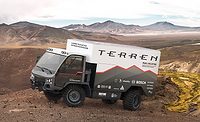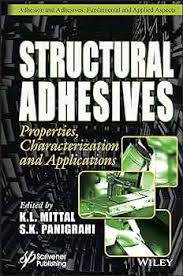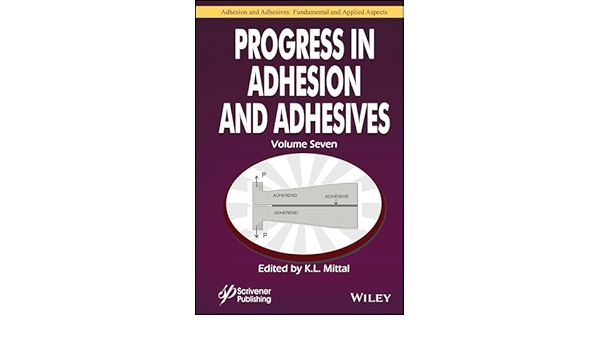Case Study
Setting Sail with Structural Adhesives
The ETS Rafale II student team built a carbon epoxy C-Class hydrofoil catamaran using Scott Bader structural adhesives.

Image courtesy of ETS and Martina Orsini.

The 2017- 2018 Rafale II team of students from the École de Technologie Supérieure in Montréal, Canada.
Image courtesy of ETS and Martina Orsini.

Rafale II’s first major outing at the U.S. Foiling Week event in Miami.
Image courtesy of ETS and Martina Orsini.

A vinyl ester resin was used in the heated molds for the new hull sections to cover the wire elements prior to the second mold tool infusion.
Image courtesy of ETS and Martina Orsini.

To minimize weight, Rafale II was redesigned using FEA and CAD technology based around a carbon fiber epoxy prepreg system and assembled using a structural adhesive.*
Image courtesy of ETS and Martina Orsini.

Using a urethane acrylate-based structural adhesive** in the corners of the hull mold not only avoided stress concentration points and prevented any dry areas or air inclusions in the finished parts, but also made the tool far less prone to corner damage during part demolding.
Image courtesy of ETS and Martina Orsini.

Image courtesy of ETS and Martina Orsini.

Using a urethane acrylate-based structural adhesive** in the corners of the hull mold not only avoided stress concentration points and prevented any dry areas or air inclusions in the finished parts, but also made the tool far less prone to corner damage during part demolding.
Image courtesy of ETS and Martina Orsini.

The new carbon fiber epoxy prepreg hull half sections for Rafale II were molded by low-pressure vacuum bagging out of autoclave using heated tooling.
Image courtesy of ETS and Martina Orsini.

To minimize weight, the two halves of the hull were bonded together using a structural adhesive* (no fastenings required).
Image courtesy of ETS and Martina Orsini.

Both the boat and the two-man team of Maxime Loiselle at the helm and Olivier Leduc as crew performed extremely well in Miami during the U.S. Foiling Week.
Image courtesy of ETS and Martina Orsini.











A team of 16 undergraduate and graduate engineering students from the École de Technologie Supérieure (ÉTS) in Montréal, Canada, recently finished building Rafale II, an all-composite C-Class racing hydrofoil catamaran. It features redesigned carbon fiber epoxy prepreg hulls and cross beams, which are stiffer and 25% lighter while providing 15% more displacement volume. The speed and handling of the catamaran has also been improved by designing lighter, stronger and better-performing pairs of new epoxy carbon fiber L-foil dagger boards and T-section rudder hydrofoils, which provide a higher lift/drag ratio and greater stability when hydrofoiling.
The first ETS Rafale project started in early 2014 with a relatively small budget of CDN$130,000 (~ $99,000) considerably less than established rival C-Class teams. However, the students received considerable support and technical advice from over 40 project sponsors, including Scott Bader North America (then Scott Bader ATC), which sponsored both Rafale I and II and provided composite resin, tooling, and structural adhesive products, as well as technical support.
This second ETS team is building on the experiences of the Rafale I team, which made history by being the first student team to compete in the highly competitive and technical International C-Class Catamaran Championship (ICCCC) racing sailing competition, nicknamed the “Little America’s Cup” or “Little Cup.” The event gained this moniker because, for many years, C-Class catamaran builders have been at the forefront of composite technology and design, having influenced both the creation of the World Speed Sailing Committee and modern racing yacht designs, including the America’s Cup class AC72, AC45 (wingsail design) and AC50 racing catamarans.
High-Tech Challenges on a Low Budget
During the design and production stages of Rafale I and II, the ETS students tackled a number of project challenges with support and technical advice from professor Simon Joncas, a lecturer and research academic in the ETS Automated Production Engineering Department with a Ph.D. in composite structures; Julien Chaussée, an aerospace engineer and former member of the British “Invictus” C-Class catamaran team member; and Xavier Grossmann, who has a master’s degree in mechanical engineering and is a design engineering conception consultant.
The key issue for Rafale I was that it was too heavy for the extreme level of competitive racing. To reduce weight, the hull had to be totally redesigned using FEA and CAD technology based around a carbon fiber epoxy prepreg system for the new hull laminate.
The new carbon fiber epoxy prepreg hull half sections for Rafale II were molded by low-pressure vacuum bagging out of autoclave (OoA) using heated tooling with a mold dwell temperature of 93°C for 10 hrs. To minimize weight, the two halves of the hull were then bonded together using a structural adhesive* in the second-stage assembly process, as were the new carbon fiber cross beam sections; the beams were fabricated by ply winding onto extruded aluminum profiles using the same epoxy prepreg grade specified for the hulls.
The new L-shaped daggerboards and T-shaped rudder foil skins were molded in the same way as the hull in two half sections using a carbon fiber epoxy prepreg, and then assembled around 3D-printed cores using a structural adhesive. The assembly of the 25 ft
(7.62 m) long hull sections proved to be a real challenge for the ETS team, being the first time the students had bonded composites parts on such a large scale with no other fixings being used.
Fastener-Free Assembly
The structural adhesive was selected by the ETS team as the most suitable structural adhesive to bond the new epoxy carbon fiber hulls and cross beams, due to a combination of its performance capabilities in use with no need for any mechanical fastenings. In addition, its processing characteristics enabled easier and quicker assembly by the team of six students compared to other adhesives trialed. The toughened, two-component 10:1 primerless acrylic adhesive was developed in-house for structurally bonding composites, thermoplastics and metals, designed to meet the bonding requirements of most assembly operations.
Given the extreme performance conditions that a C-Class hull has to cope with, to ensure maximum adhesion strength, the epoxy laminate bond surfaces were first sanded with 220-grade paper and then cleaned with acetone. The adhesive was then applied from 400-ml coaxial cartridges using manual hand guns under 20°C ambient conditions, which provided a 40-min working time and a fixture time of around 85 min.
The adhesive is also currently being trialed to structurally bond the new epoxy carbon hydrofoil half sections, having had some tolerance and adhesion issues with an epoxy prepreg adhesive that had been used to assemble the first set of T rudders and L-foils. Once again, no fastenings are used in the design.
Creative Tooling
The MDF plugs for the new hulls and rudders were part manufactured externally by two specialist toolmaking companies and then finished by the ETS students, who made all the individual molds. A vinyl ester resin fairing compound was used in the heated molds for the new hull sections to cover the wire elements prior to the second mold tool infusion.
A urethane acrylate-based structural adhesive** was also used in both the hull and the rudder and dagger boards molds, primarily to eliminate sharp-edged stress areas, especially in the thin foils, and to prevent any dry areas or air inclusions in the corners during infusion. The curved radius corners also helped with fiber alignment and avoided any gelcoat displacement when the vacuum was applied during the infusion stage. The students found that using the urethane acrylate-based structural adhesive in the corners not only avoided stress concentration points in the finished parts, but had the added benefit of producing a more durable mold tool, which was far less prone to corner damage during part demolding.
Future Aspirations
Rafale II had its first major outing in February at U.S. Foiling Week in Miami; this is one of many foiling week regatta sailing and technical forum events that take place around the world for all classes of foiling sailboats and competitive sailors. This event attracted top racing personalities, including a Team GB Laser Olympic Gold medal winner, Moth class foil sailors from the USA National team, and a former America’s Cup-winning sailor. The current C-Class Association president, Steve Clark, accepted the ETS team’s invitation and attended the event to watch Rafale II in action.
ETS Rafale was once again the only student team, but this time also the only C-Class at the foiling week event. Both the boat and the two-man team of Maxime Loiselle at the helm and Olivier Leduc as crew performed extremely well and exceeded expectations; at the end of the week, the Rafale II team received first prize in recognition of its outstanding performance during the regattas. The team plans to race against other C-Class teams in an open event in September in Montreal, and compete in the next Little America’s Cup ICCC event, where Rafale II would be taking on the best in the world. ASI
For more information, visit www.scottbader.com. The Rafale C-Class Project can be found online at http://etsclassc-rafale.ca/en/projets.html, and the Little Cup at www.littlecup.org/en.
Author’s note: The use of the term “Little America's Cup” is for reference in the context of this article only and does not in any way or form show there is any association or affiliation with America’s Cup Properties Inc., which is the owner of the “America’s Cup” registered trademark.
Looking for a reprint of this article?
From high-res PDFs to custom plaques, order your copy today!



















